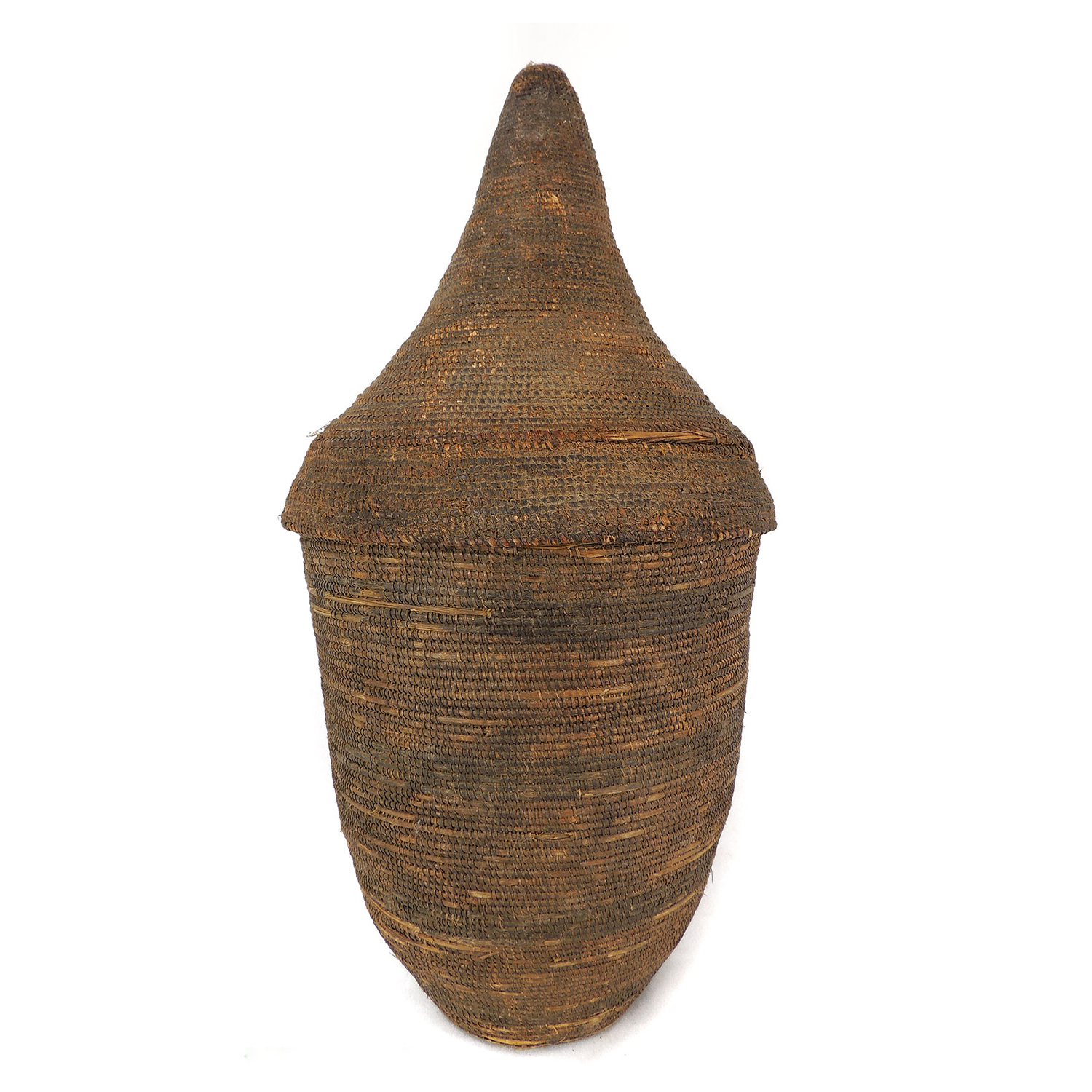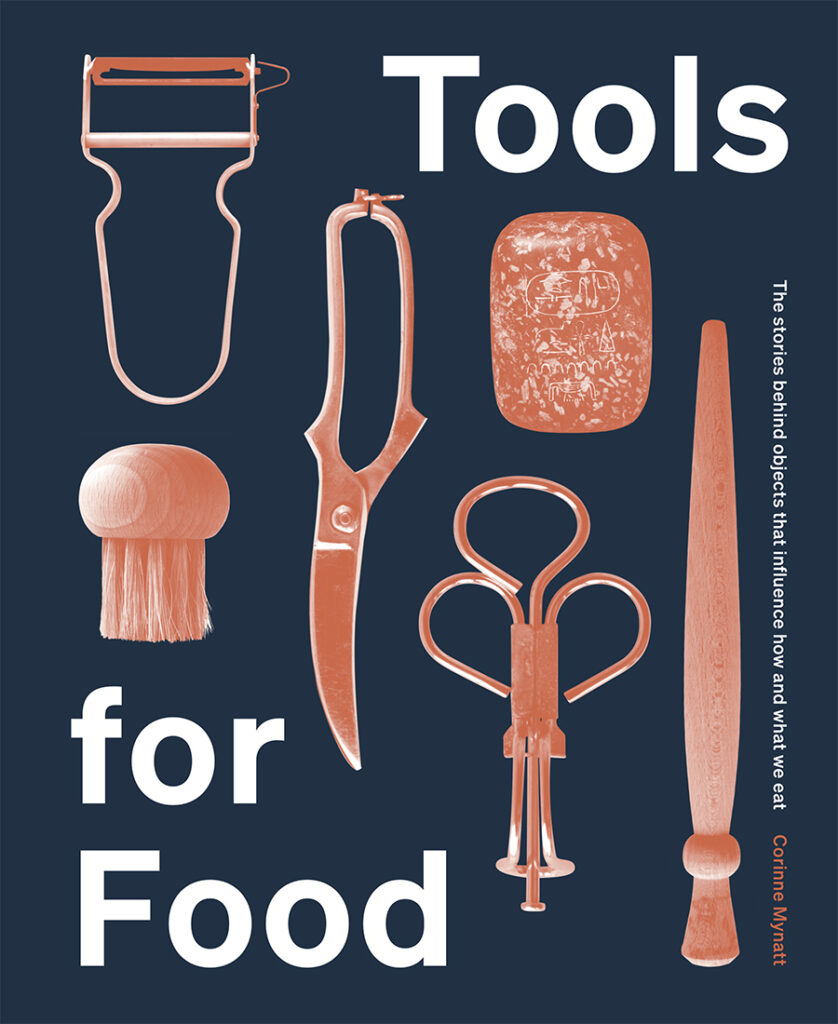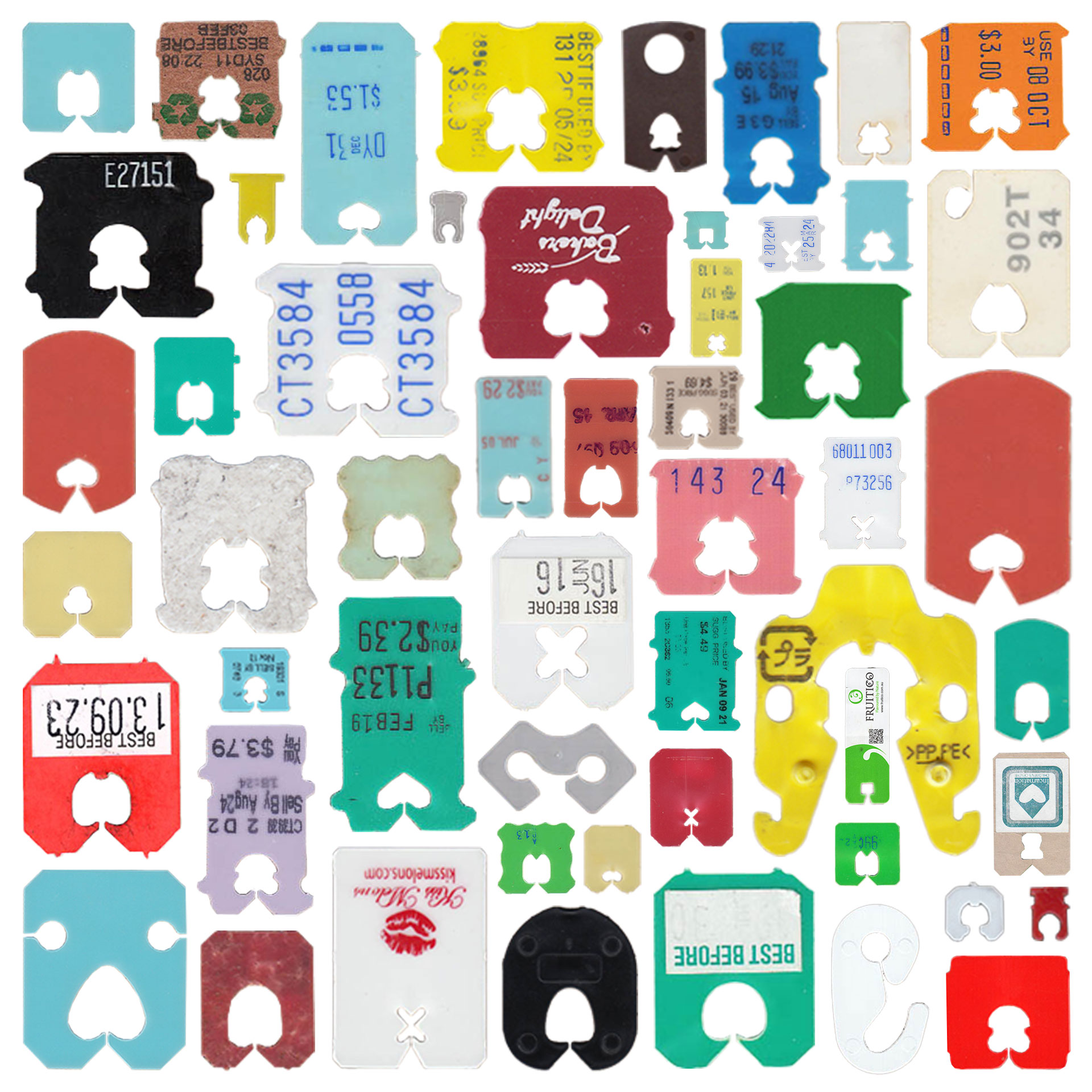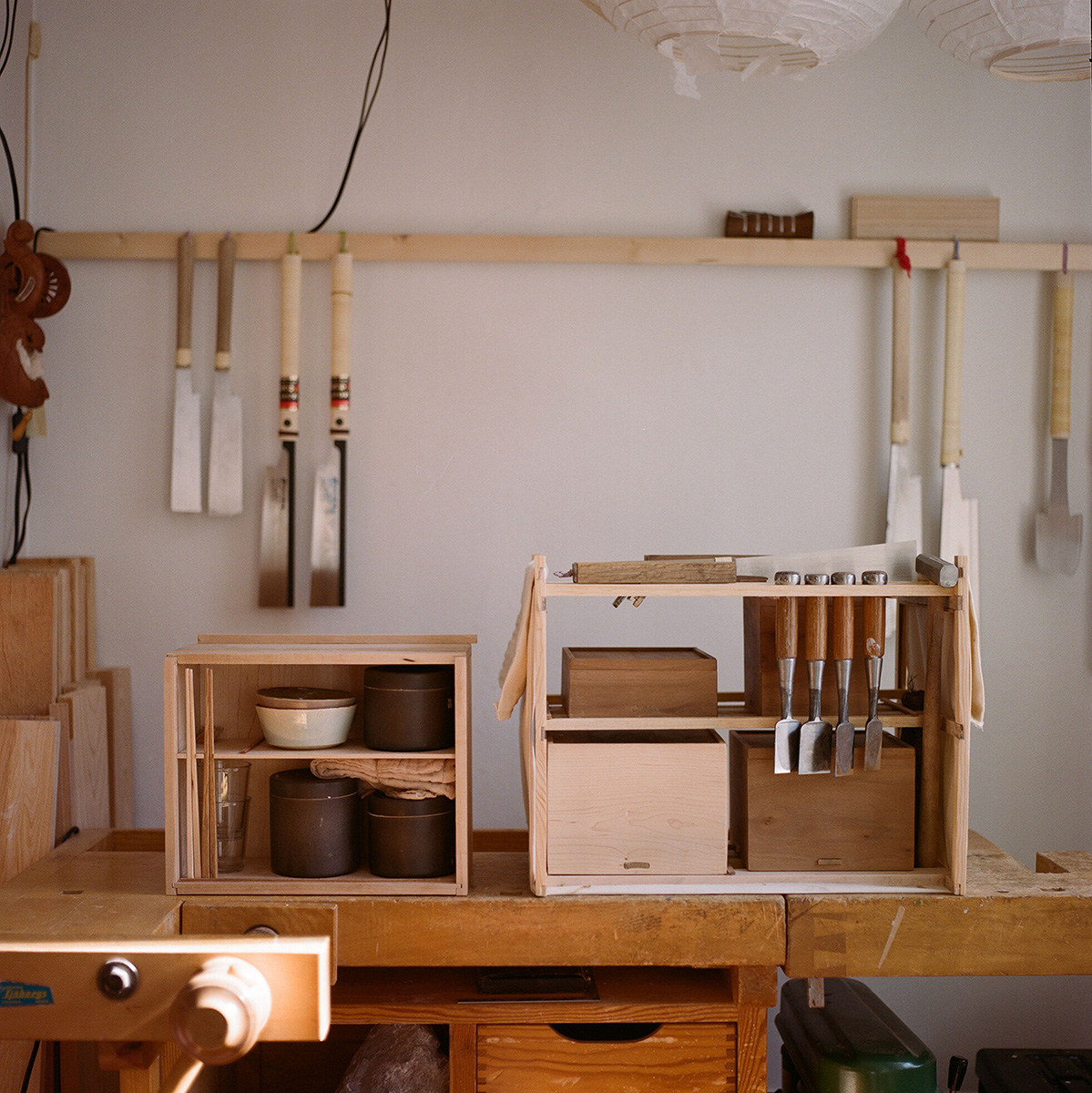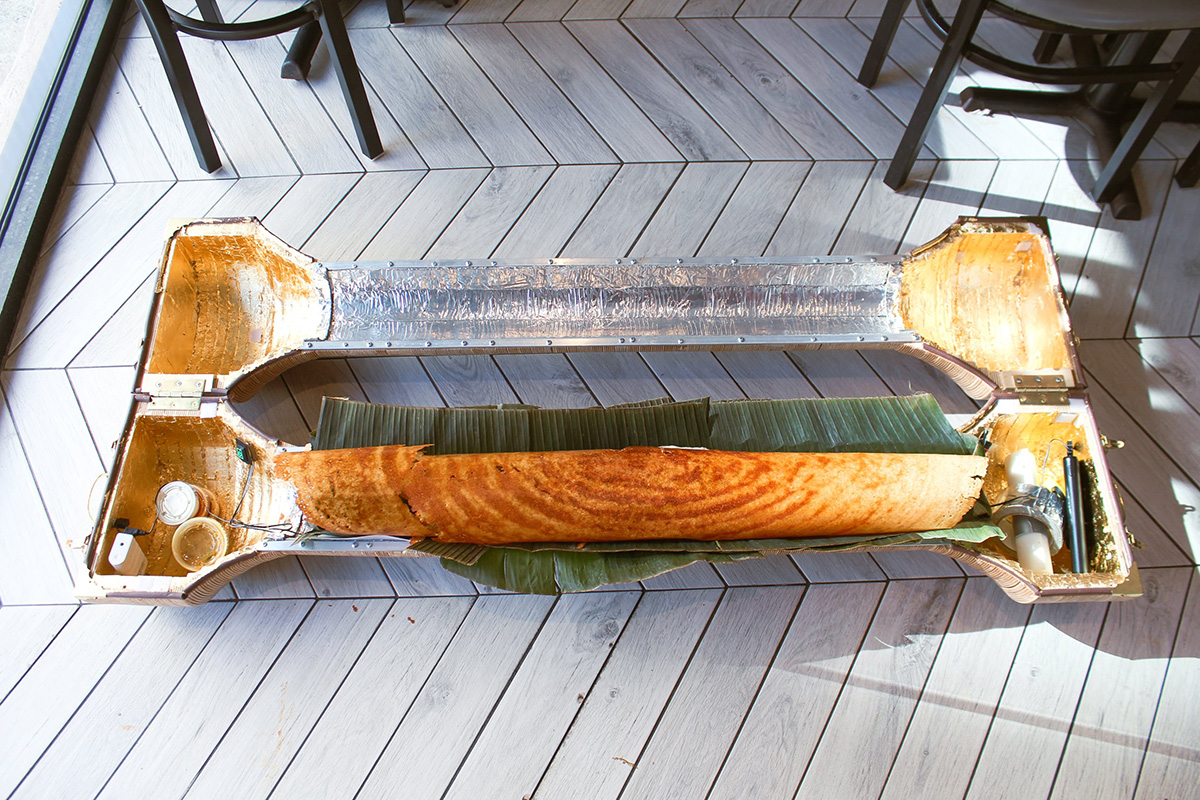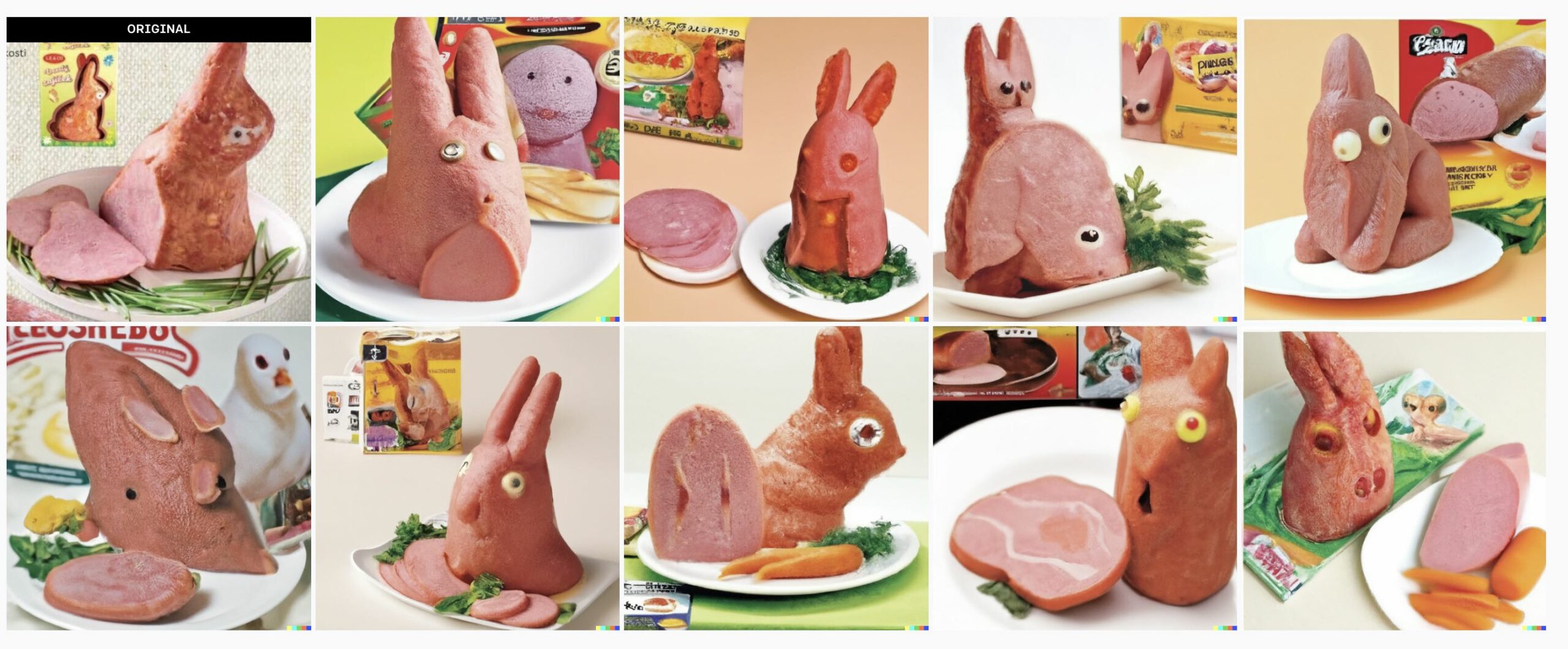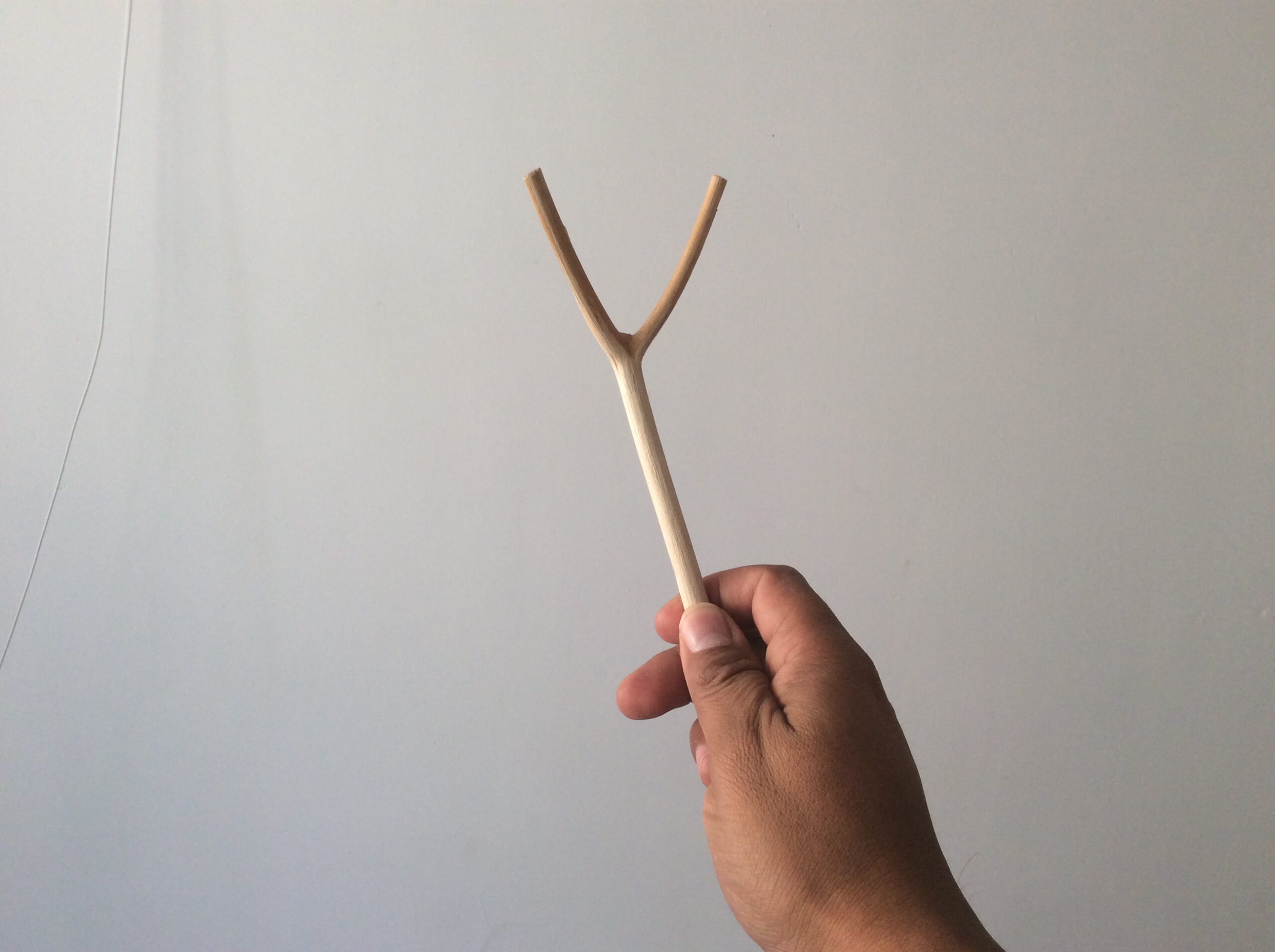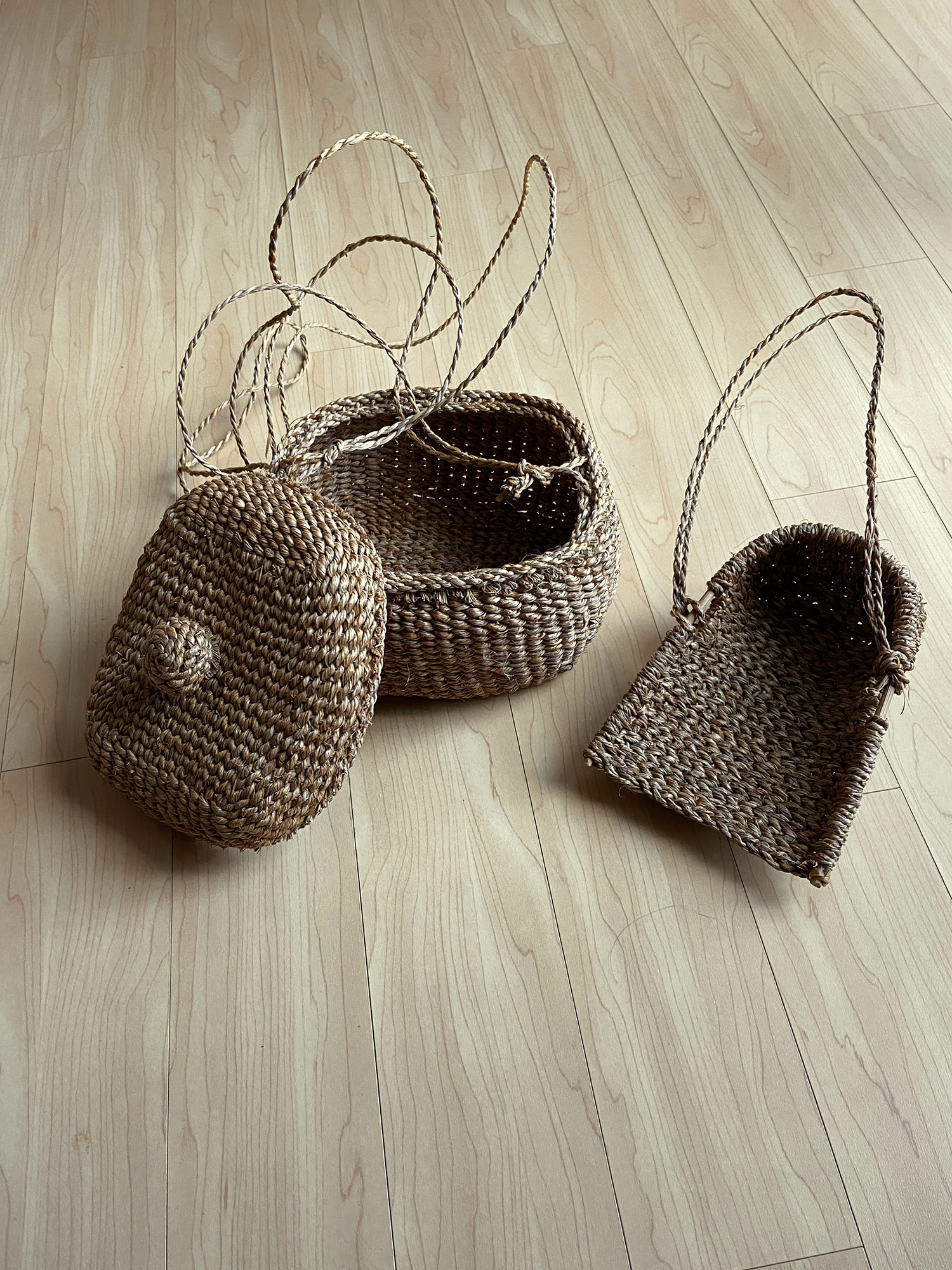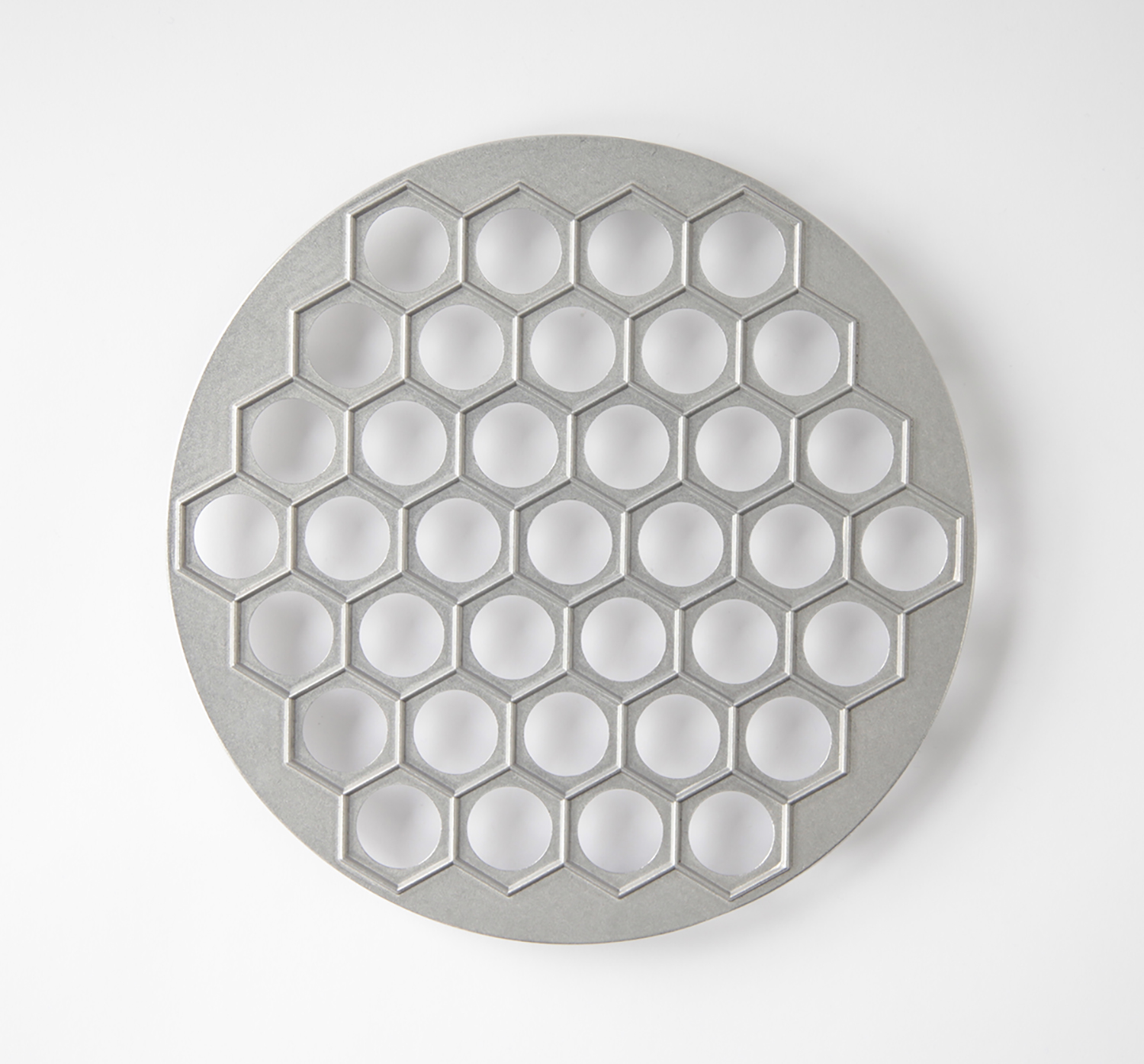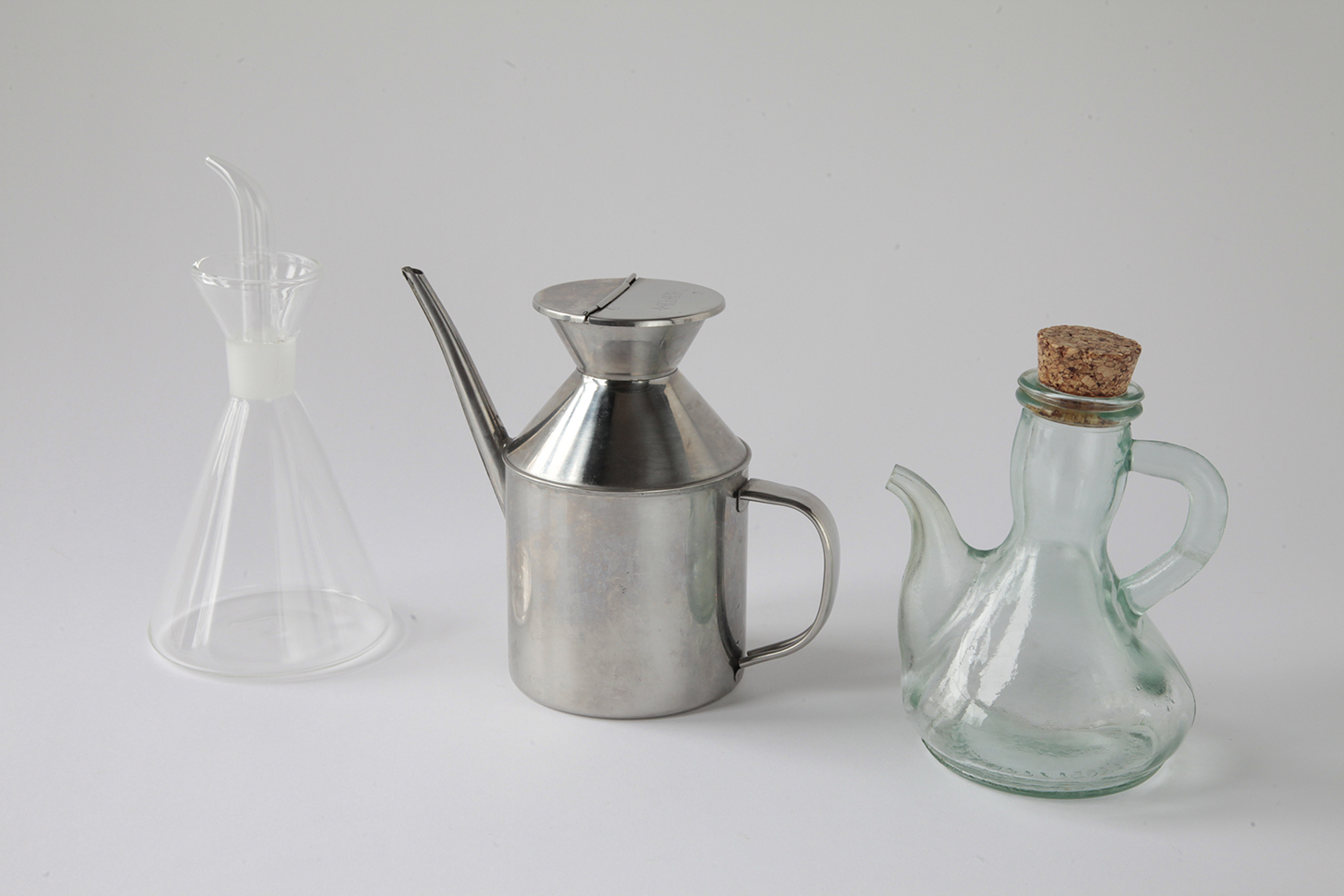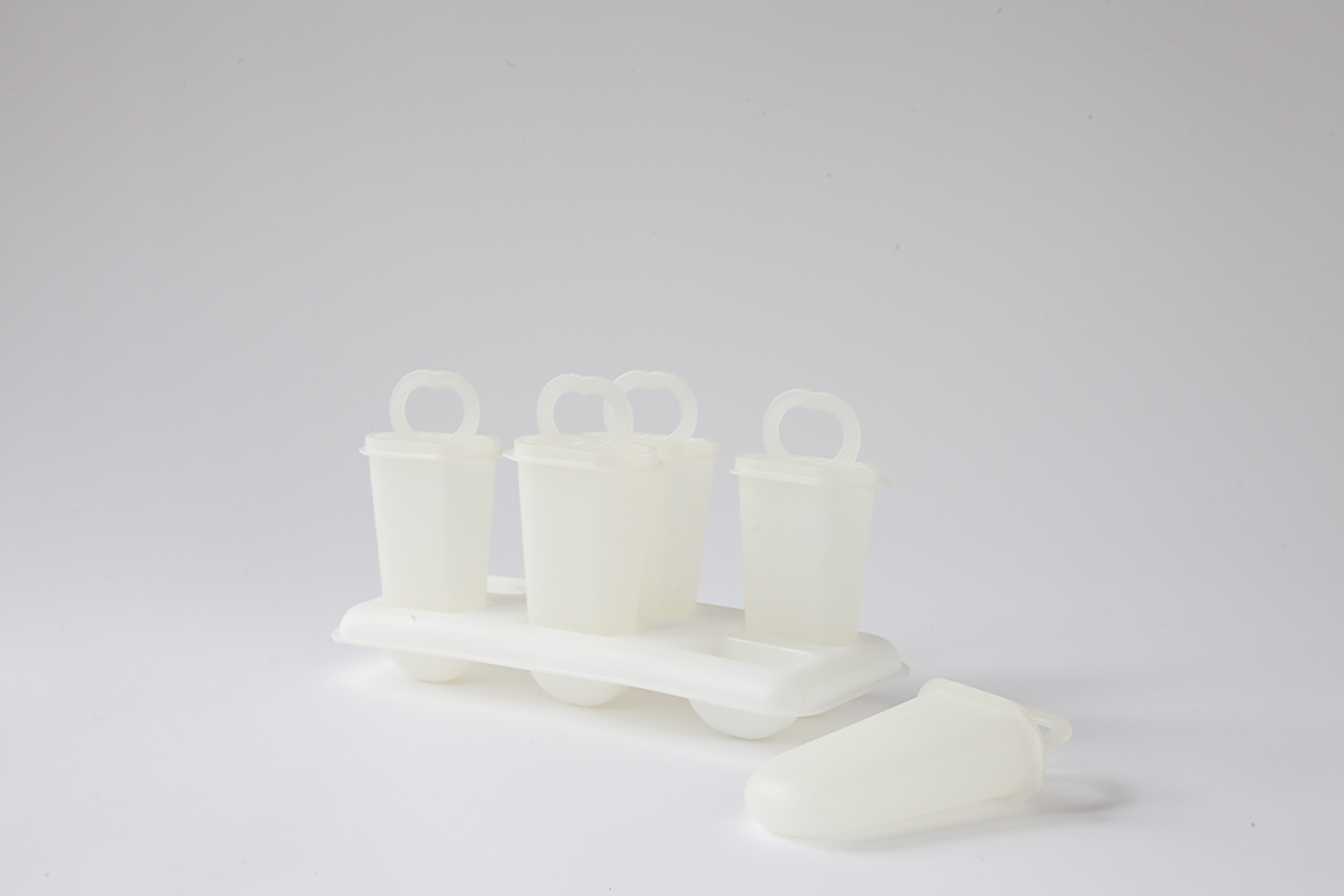Basketry and weaving natural fibers goes back thousands of years and is a practical way of making containers in places where grass, reeds, raffia (palm leaf) and rush grow abundantly. Exquisite specimens found in Ancient Egypt from the 15th century BCE demonstrate the sophisticated craft and use of these vessels, though the skill and tradition across humanity goes back even further.
There is a rich history and tradition of basket weaving in Africa and all over the world—from Japan to Native America—using skills that have been passed down through the generations. Different regions and tribes across the continent have their own techniques and variations, from coil-sewn baskets to woven styles. Patterns are created through color, made with natural dyes from roots, flowers (such as banana) and seeds.1 These baskets are important objects for storing harvested roots, rice and grain, and hold symbolic significance as gifts when given or handed down at the moment of marriage. Shallow, unlidded baskets are also used to winnow rice and grains, or when inverted can be used as a food cover. The Tutsi basket pictured was typically made of sisal or papyrus. These baskets are now often exchanged or given as symbols of peace, since the end of the Rwandan genocide in the 1990s. Unfortunately, some basket-weaving traditions are dying out as a result of plastic replacing these containers, which are made from natural, sustainable materials.
- 1. Again, another object delight to discover, and what I loved most about the research I did for Tools for Food. I try to hammer this home in the book a bit, that through these objects we can learn more about other cultures, their differences and similarities. We can also appreciate the craftsmanship of objects, and the complex series of factors that contribute to their creation: the materials available, the needs of the food it complements, the needs of the people using the object. I imagine and hope the people using this object are brought great joy through their daily interaction with it. -CM
Tools for Food (available 11/23 in the United States) tells the stories of design and culture behind kitchen implements from across the world, and how each and every one contributes to the way we eat, cook and live today. Pre-order your copy of the book from Book Larder (Seattle), Now Serving (Los Angeles), Kitchen Arts & Letters (NYC), or from a fine independent retailer new you.
